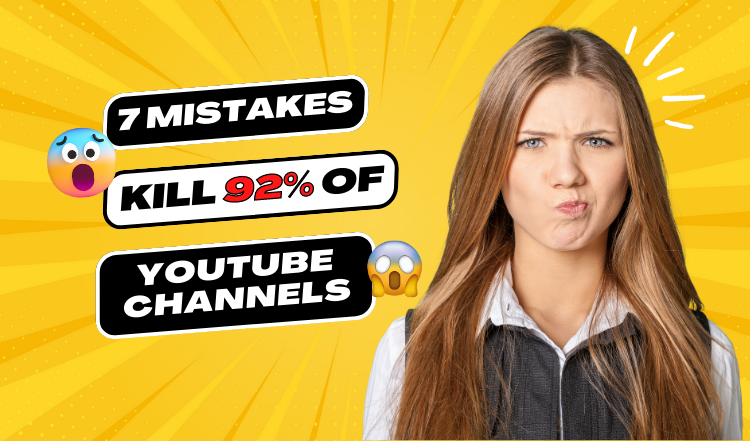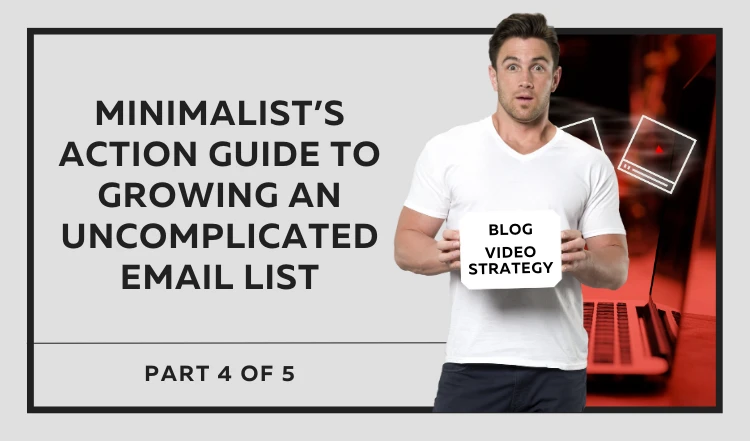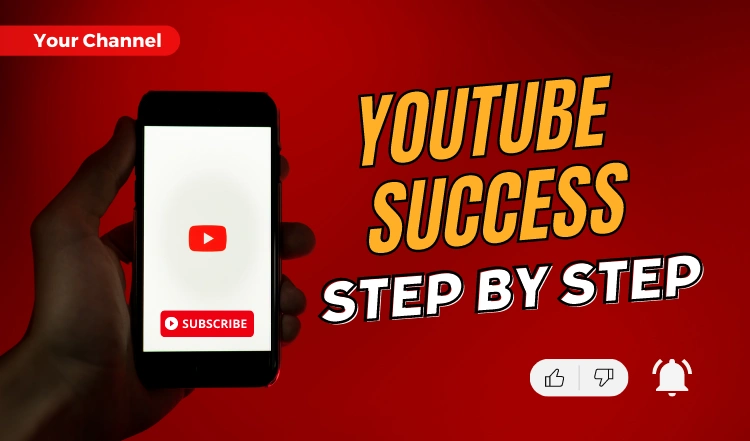Aspiring YouTubers often find themselves struggling to gain views and traction on their channels. Surprisingly, many of these challenges stem from avoidable mistakes that can hinder their success.
By recognizing and addressing these errors, small YouTubers can significantly increase their viewership and engagement.
In this article, we will discuss some of the most common mistakes made by YouTubers and provide valuable insights on how to avoid them.
7 Reasons YouTube Channels Fail
1. Lack of a Video Strategy
One of the first mistakes many YouTubers make is diving into video creation without a clear strategy. Before hitting the record button, it’s crucial to understand the purpose of your video.
Are you aiming to rank in search results or attract traffic from browsing and suggested videos?
By determining your video’s strategy, you can tailor your titles and structure your content accordingly.
2. Using Overly Specific Titles
Being overly specific with your video titles can limit their reach. YouTube thrives on attracting a broad audience, and overly specific titles may not appeal to a wide range of viewers.
For example, a title like “How to Save an NBA Bust: The Markell Fultz Story” could be too niche.
Instead, aim for broader titles that attract a wider audience and incorporate elements like storytelling and extreme language to captivate viewers.
Example of an overly specific title:
“Step-by-Step Tutorial: How to Change the Oil in a 2015 Honda Civic LX”
This title is highly specific to a particular car model and task. While it may attract viewers who own a 2015 Honda Civic LX and want to learn about changing the oil, it won’t resonate with a broader audience.
Example of a broader and captivating title:
“Car Maintenance 101: Essential Tips for Keeping Your Honda Running Smoothly”
By broadening the scope of the title to include car maintenance tips and emphasizing the goal of keeping a Honda running smoothly, this title appeals to a wider range of viewers who are interested in general car maintenance practices but are also searching for Honda.
After all, if your site or social accounts specialize in Honda related content, you want to target your audience accordingly. But don’t target your titles to an audience that is likely too small to make a difference in your views.
Remember, finding the right balance between being specific enough to attract your target audience and capturing the attention of a broader viewership is key when crafting engaging and effective titles for your YouTube videos.
3. Titles That Are Simply Too Broad
On the flip side, having titles that are too broad can be detrimental if your goal is to rank in search results. When users search for videos, they are often seeking specific answers or solutions.
Therefore, if your title is too general, viewers may overlook it, assuming it doesn’t address their specific needs.
Strike a balance between being specific enough to answer viewers’ questions and capturing their attention.
Here’s an example of a title that is too broad:
“The Ultimate Guide to Fitness”
This title is vague and doesn’t provide any specific information. It fails to attract viewers who are looking for something more specific.
So, what should this title be instead?
Here’s a far better version of that title that’s more specific (but not overly specific):
“5 Effective Exercises for Weight Loss and Toning”
By adding specific details, such as the number of exercises and the desired outcome, this title becomes more appealing to viewers who are specifically interested in weight loss and toning.
4. Titles That Are Way Too Long
YouTube truncates titles after a certain length, and excessively long titles can deter viewers.
Users scrolling through YouTube are often looking for quick and concise information.
Long titles can be overwhelming and fail to grab attention.
Aim to keep your titles as concise as possible while still conveying the value of your content effectively.
Here’s an example of a title that’s simply too long:
“The Definitive Guide to Social Media Marketing: Strategies, Tips, and Case Studies for Business Growth”
This title is excessively long and may get truncated, losing its impact. It overwhelms viewers and fails to grab attention quickly.
And quite honestly, all people are scanners these days. We scan everything on a page, including video titles, before we decide whether to read more than a word or two of it.
Example of a more concise title:
“10 Proven Social Media Marketing Strategies for Business Growth”
By condensing the title and focusing on the key aspect (strategies for business growth), this title becomes more engaging and easier to read.
5. Not Conducting Experiments & Using The Data
Experimentation and data analysis play a crucial role in optimizing your YouTube channel for increased views. By conducting experiments and analyzing the results, you can gain valuable insights into what works best for your audience and make informed decisions about your content strategy. Here are a couple of examples to illustrate this concept:
Example 1: Video Title Testing
Let’s say you have two different title options for a video:
- “10 Easy Recipes for Quick Meals”
- “Delicious and Healthy Recipes Under 30 Minutes.”
To determine which title resonates better with your audience and drives more views, you can conduct an experiment by publishing the same video with each title separately and tracking their performance.
After a period of time, analyze the data by looking at the view count, engagement metrics (likes, comments, shares), and audience retention.
If you find that the video with the title “Delicious and Healthy Recipes Under 30 Minutes” garnered significantly more views and engagement compared to the other title, you can conclude that this title style is more effective for attracting your audience’s attention.
Based on this data, you can apply the winning title style to future videos in a similar category, improving the chances of increased views and engagement.
Example 2: Content Format Experimentation
Suppose you run a beauty and makeup channel, and you’re considering experimenting with different content formats, such as tutorial videos, product reviews, and makeup challenges. To determine which format resonates best with your audience and generates higher views, you can conduct an experiment by creating and publishing videos in each format separately.
Monitor the performance of each video by examining metrics such as views, likes, comments, and shares. Suppose you find that your tutorial videos consistently receive higher views and engagement compared to the other formats. In that case, you can conclude that tutorial content is preferred by your audience.
Armed with this data, you can make informed decisions about the types of content to prioritize and produce more of, which will likely lead to increased views and a more engaged audience.
By conducting experiments like these and carefully analyzing the data, you can gain insights into what content resonates best with your audience, allowing you to refine your approach and create videos that have a higher potential for success in terms of views, engagement, and overall channel growth.
6. Ignoring Past Data
There are no shortcuts to success on YouTube, but leveraging past data comes close.
By studying your competitors’ channels, you can learn from their successes and failures.
Analyze which video ideas performed well and which ones fell flat. This analysis allows you to make informed decisions, saving you time and effort by avoiding content that doesn’t resonate with your audience.
7. Overall Lack of Audience Understanding
Knowing your audience is essential for success on YouTube. Understanding their hopes, dreams, fears, and goals helps you create content that resonates with them.
For instance, a visual effects channel shared their experience with two videos. One focused on recreating a shot from a popular film and gained significant views, while the other delved into the story structure of a different movie and received much fewer views.
By knowing why your audience comes to your channel, you can deliver content that meets their expectations and avoids videos that may flop.
Example of a video that lacks audience understanding:
“Analyzing Complex Mathematical Equations”
This video, focusing on complex mathematical equations, may not resonate with a general audience. It fails to address the specific needs and interests of the target viewers.
Example of a video that demonstrates audience understanding:
“Simplifying Algebra: Easy Tips for Solving Equations”
By understanding the audience’s struggle with algebra and offering simplified tips, this video targets a specific group of viewers seeking help with solving equations.
Building a successful YouTube channel requires avoiding common mistakes and catering to your audience’s needs.
By understanding your video strategy, striking the right balance between specificity and broad appeal, crafting concise titles, analyzing past data, and truly knowing your audience, you can significantly increase your YouTube views.
Remember, success on YouTube is not solely reliant on chance; it’s a combination of data-driven decision-making and a deep understanding of your viewers’ preferences. Start implementing these strategies today and watch your YouTube channel flourish.





